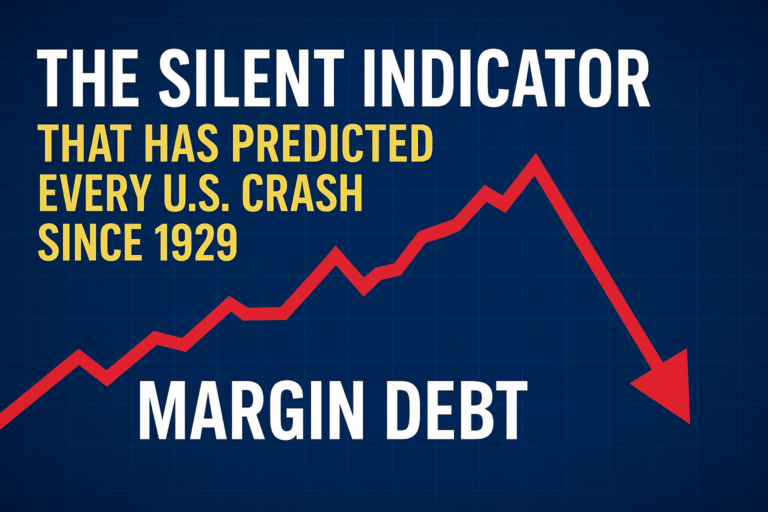
Ever feel like every new headline about tariffs, trade skirmishes, or military posturing sends your portfolio into a freefall? With global defense spending topping $2.718 trillion in 2024—up 9.4% year-over-year—and trade policies shifting faster than you can refresh your brokerage app, retail investors are understandably on edge. But what if you could transform geopolitical uncertainty into actionable opportunities?
This post demystifies the link between global events and market moves so you can invest with confidence. We’ll explore three key themes:
- Defense & Security Stocks: How rising global tensions are fueling defense contractors and ETFs
- Supply Chain Shifts: Why friend-shoring and reshoring are rewriting domestic manufacturing and logistics
- Currency Dynamics: The impact of a strong vs. weak U.S. dollar on your international holdings
Ready to turn geopolitical headaches into portfolio wins? Let’s dive in.
1. Betting on Stability: Why Defense Is Winning
Think defense is just for institutional big shots? Think again. Rising global tensions have ignited a surge of investor interest in defense equities.
Over the past 15 years, the SPADE Defense Index has delivered nearly 17% annualized returns, yet the sector remained underowned—until recently. In 2022 there were just four defense-focused ETFs; today there are 27 managing over $35 billion in assets, driven by record government budgets and persistent conflicts.
Governments ramped up spending for a 10th consecutive year: Russia increased its defense budget by 38% to $149 billion, Germany boosted its allocation by 28% to $88.5 billion, and Poland hiked it 31% to $38 billion. These budgets fuel contracts for everything from fighter jets to cyber-security systems.
3 Underrated ETFs to Watch
- SPDR S&P Aerospace & Defense ETF (XAR) – Broad exposure to defense contractors
- Invesco Aerospace & Defense ETF (PPA) – Focus on large-cap defense names
- iShares U.S. Aerospace & Defense ETF (ITA) – Blend of manufacturing and tech suppliers
While Big Tech stocks grab headlines, defense equities offer steady cash flows, dividends, and secular tailwinds—think of them as the picks and shovels of modern security.
Israel-Iran Conflict: Geopolitical Impact on U.S. Alliances
2. Friend-Shoring & Reshoring: The New Supply-Chain Playbook
Tired of surprise slowdowns and sky-high shipping bills? Welcome to the era of friend-shoring and reshoring, where companies realign supply chains to navigate tariffs and political risk.
Friend-shoring means relocating production to allied nations with similar political values, creating resilient networks that can withstand global uncertainties and tariff shocks. With U.S. policy incentives—like tax breaks for domestic production and relaxed regulations—reshoring manufacturing back to North America is also gaining steam, despite higher labor costs and dollar volatility.
Top 3 Supply-Chain Stocks to Consider
Flex Ltd (FLEX)
- A global contract manufacturer with major plants in Mexico under “friend-shoring” deals
- Offers electronics and industrial OEM services for industries from autos to med-tech
- Well-positioned as multinationals diversify production away from Asia
Prologis, Inc. (PLD)
- The world’s largest logistics REIT, building new U.S. fulfillment centers to slash lead times
- Secures long-term leases with e-commerce giants and manufacturers reshoring to North America
- Dividend yield near 2.8% plus exposure to surging warehouse‐space demand
Rockwell Automation, Inc. (ROK)
- Leading provider of factory automation, control systems, and software for domestic plants
- Partner to reshoring efforts—supplying smart sensors, PLCs, and industrial robots
- Steady revenue growth from Industry 4.0 upgrades and smart-factory rollouts
Friend-shoring differs from nearshoring (closer geography) and reshoring (full return home) by emphasizing political alignment over proximity. As tariffs on Chinese imports rise, these strategies offer defensive moats and predictable costs
3. Dollar Power: How Currency Swings Shape Returns
Wondering why your international ETF lags when the dollar rallies? Currency moves can make or break overseas returns.
A strong U.S. dollar lowers import prices and eases inflation, but it also hammers exporters and foreign earnings—U.S. companies with heavy international exposure see margins squeezed when translated back into dollars. Conversely, a weak dollar turns currency exposure into a return enhancer for unhedged international stocks and commodities, as overseas profits translate into more dollars on your statement.
What a Strong Dollar Means
- Cheaper U.S. imports and lowered consumer prices
- Headwinds for multinational revenues
- Potential drag on commodity prices
What a Weak Dollar Means
- Boosted returns for international equities and ETFs
- Higher commodity and metal prices (copper, oil)
- Tailwind for emerging-market stocks
3 Currency-Sensitive ETFs to Watch
- iShares MSCI EAFE ETF (EFA) – Developed-market equities benefit from dollar weakness
- Vanguard FTSE Emerging Markets ETF (VWO) – High beta to currency swings in growth markets
- Invesco DB Commodity Index Tracking Fund (DBC) – Direct play on raw materials
By understanding dollar dynamics, you can hedge risk or harvest extra gains when global currencies shift.
From defense contractors to domestic manufacturers and currency trades, geopolitical investing turns headlines into real-world portfolio strategies. You don’t have to be a global strategist—just portfolio-savvy.



